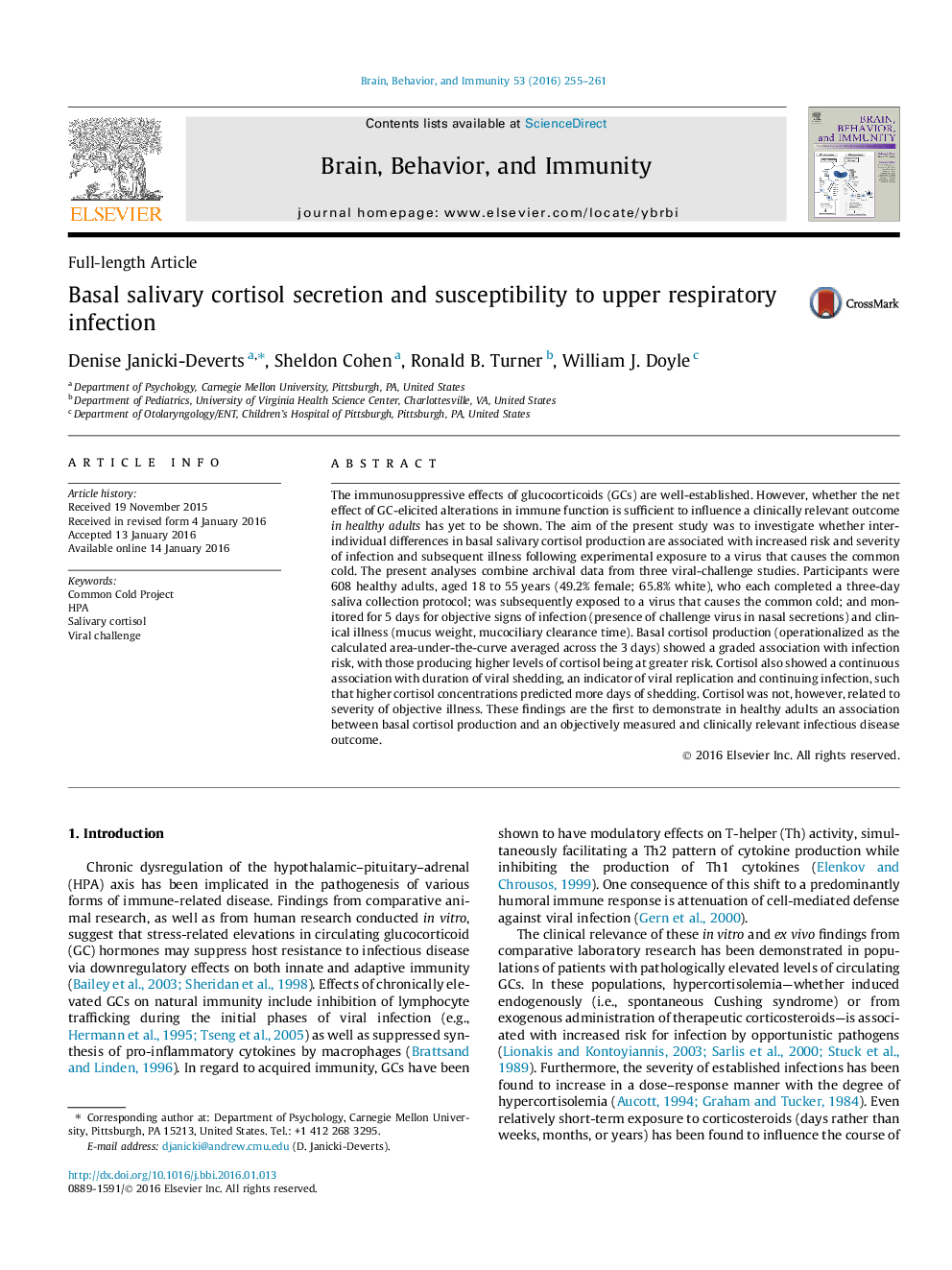| کد مقاله | کد نشریه | سال انتشار | مقاله انگلیسی | نسخه تمام متن |
|---|---|---|---|---|
| 922096 | 1473914 | 2016 | 7 صفحه PDF | دانلود رایگان |
• Risk for upper respiratory viral infection increases with increasing basal cortisol.
• Higher basal cortisol is associated with more days of viral shedding.
• Basal cortisol is unrelated to severity of clinical illness subsequent to infection.
The immunosuppressive effects of glucocorticoids (GCs) are well-established. However, whether the net effect of GC-elicited alterations in immune function is sufficient to influence a clinically relevant outcome in healthy adults has yet to be shown. The aim of the present study was to investigate whether inter-individual differences in basal salivary cortisol production are associated with increased risk and severity of infection and subsequent illness following experimental exposure to a virus that causes the common cold. The present analyses combine archival data from three viral-challenge studies. Participants were 608 healthy adults, aged 18 to 55 years (49.2% female; 65.8% white), who each completed a three-day saliva collection protocol; was subsequently exposed to a virus that causes the common cold; and monitored for 5 days for objective signs of infection (presence of challenge virus in nasal secretions) and clinical illness (mucus weight, mucociliary clearance time). Basal cortisol production (operationalized as the calculated area-under-the-curve averaged across the 3 days) showed a graded association with infection risk, with those producing higher levels of cortisol being at greater risk. Cortisol also showed a continuous association with duration of viral shedding, an indicator of viral replication and continuing infection, such that higher cortisol concentrations predicted more days of shedding. Cortisol was not, however, related to severity of objective illness. These findings are the first to demonstrate in healthy adults an association between basal cortisol production and an objectively measured and clinically relevant infectious disease outcome.
Journal: Brain, Behavior, and Immunity - Volume 53, March 2016, Pages 255–261
